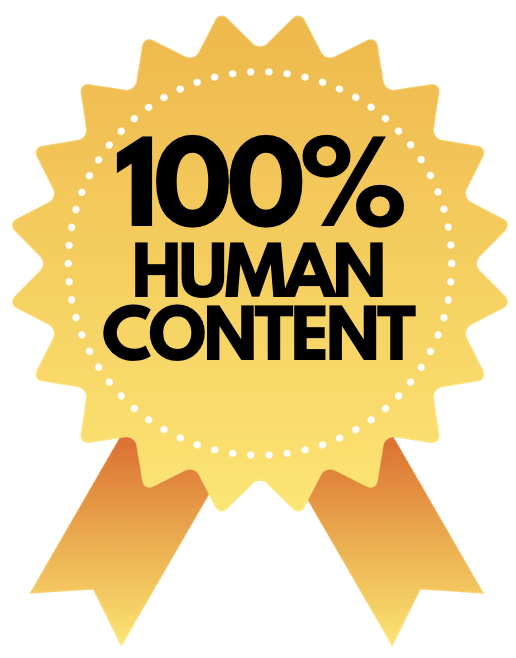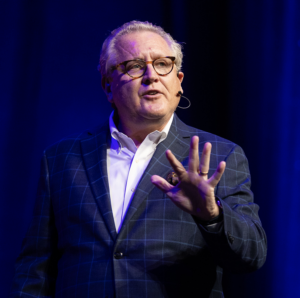
OK, I’ve had enough of this. In four out of my last five coaching calls, the business leader on the other end of Zoom told me their main platform for content is LinkedIn. No blog. No content on a website. Just LinkedIn.
No, no, no. Also, no.
It’s time to stop the insanity. Today I’m turning you from the dark side and explaining why LinkedIn cannot be your primary content platform.
Back to basics: What are you doing?
 Why are you creating content in the first place? There are two main reasons: Enhance your Search Engine Optimization (SEO) or build personal authority.
Why are you creating content in the first place? There are two main reasons: Enhance your Search Engine Optimization (SEO) or build personal authority.
Increasingly, I favor the authority strategy because I believe SEO success is out of reach for many businesses.
Building authority means you don’t have to depend on SEO algorithms any more. You create content so worthy that people subscribe to it so they don’t miss a thing. In a virtual way, subscribers are saying, “I believe in you. I’m interested. Send me more content.”
That’s a beautiful thing. But it all depends on:
Your email strategy
When you publish on your website, or even a place like Substack, you own the email addresses. This, my friends, is probably the most valuable commercial asset in your business.
If you own the email list, you have the opportunity to directly grow relationships, announce commercial deals, and collect information that can be used to personalize offers.
How many email addresses do you own from the content you publish only on LinkedIn? None. So why is LinkedIn your content platform? They own your audience, and we don’t want that.
The SEO killer
Let’s say you’re one of those rare businesses or individuals who have a real chance to win the game of SEO roulette. You’re publishing your brains out on LinkedIn. Content every week. Maybe every day!
Now, if somebody wants to find you through search and give you their money, they go to Google and enter juicy keywords. What’s the chance they’re going to find some post you created on LinkedIn? Go ahead and try it. Do LinkedIn posts show up in any Google search? No.
But what about a blog post, or a YouTube video, or a podcast episode? Yes. That’s the content that fuels SEO on Google. When was the last time you ever had a post on LinkedIn go viral? That’s what I thought.
Oh, one more thing. Who owns LinkedIn? Microsoft. What else does Microsoft own? Bing. Google’s enemy. I don’t think Google is going to give LinkedIn a search assist.
And it gets worse …
AI and LinkedIn do not play well together
A friend is studying the impact of AI on search more closely than anyone I know. And she recently made a shocking observation.
When she queried AI bots about the top thought leaders in AI and search, none of the familiar experts posting through newsletters and LinkedIn showed up. In fact, all of the information provided by AI bots was absorbed from bloggers she had never heard of (but she is following them now!).
Her suggestion: Start a blog right away! At least for now, blogs on websites are driving the content on AI, not LinkedIn posts. This is the future of search.
Evaporation Station
There’s one other risk I should mention.
Do you remember when Facebook had a popular blogging platform? It was called Notes. In October 2020, Facebook eliminated this feature without warning. Millions of people lost their blog content in a moment.
Do we expect LinkedIn to do anything like that? Well … did we expect Facebook to do anything like that?
How to do LinkedIn right
Here’s where people get confused. LinkedIn is not a content platform. It’s a distribution system.
Your brand is fueled by four types of content: written, video, audio, or images (like Instagram). For most business professionals, there really are three: written, video, or a podcast. Pick one and put everything you have into it.
Now, once you have that content, you can use social media to deliver that content to your audience. For example, once you have a blog post ON YOUR WEBSITE, you can distribute it on LinkedIn, Substack, Twitter, and other places. But your website is the home base, the primary platform, always.
Here’s a strategy to create and distribute your content in a smart way on LinkedIn.
- Research shows that text-based content does best on LinkedIn. Neither video nor podcasts are effective because those content forms do not start conversations in the comment section. Conversations mean dwell time for LinkedIn! So if LinkedIn is important to you, I would focus on blogging.
- Publish a blog post on your website.
- Publish this same post as an article (not a link) on LinkedIn two days after you publish it on your website. I post a little later to send a signal to Google that I am the author of the content. I am the original source. Send the search traffic to my website.
- When you publish your article on LinkedIn, be sure to include an attractive graphic or photo. As people scan their LinkedIn feed, their eyes will be attracted to the image, then the headline, and then, if you’re lucky, the content. So images are important.
- At this point, LinkedIn will expose your post to a small percentage of your followers. If you can attract comments (conversations) in the first hour after it is posted, LinkedIn will then expose it to the rest of your audience, and perhaps even people outside your followers. Huzzah!
Going forward
Starting with a blog-first strategy provides many other benefits, of course. It might not be the sexiest content in our TikTok world, but for business professionals looking to stand out on LinkedIn, it makes a lot of sense.
A blog can also serve as a portfolio of your work. It provides a centralized location where potential employers, clients, or collaborators can see your expertise, writing style, and the topics you are passionate about. Whether you’re building a brand, looking for a job, or hiring somebody, eventually, people come to your website.
If you take one thing away from this post, I hope it is this: If you’re only posting your content on LinkedIn, you’re grotesquely sub-optimizing your personal branding and content marketing effort. LinkedIn and other social media platforms can play a crucial role in personal branding. But please post all of your content on your website first and then send it into the social media distribution system.
 Mark Schaefer is the executive director of Schaefer Marketing Solutions. He is the author of some of the world’s bestselling marketing books and is an acclaimed keynote speaker, college educator, and business consultant. The Marketing Companion podcast is among the top business podcasts in the world. Contact Mark to have him speak at your company event or conference soon.
Mark Schaefer is the executive director of Schaefer Marketing Solutions. He is the author of some of the world’s bestselling marketing books and is an acclaimed keynote speaker, college educator, and business consultant. The Marketing Companion podcast is among the top business podcasts in the world. Contact Mark to have him speak at your company event or conference soon.
Follow Mark on Twitter, LinkedIn, YouTube, and Instagram.
Top photo courtesy Unsplash.com


